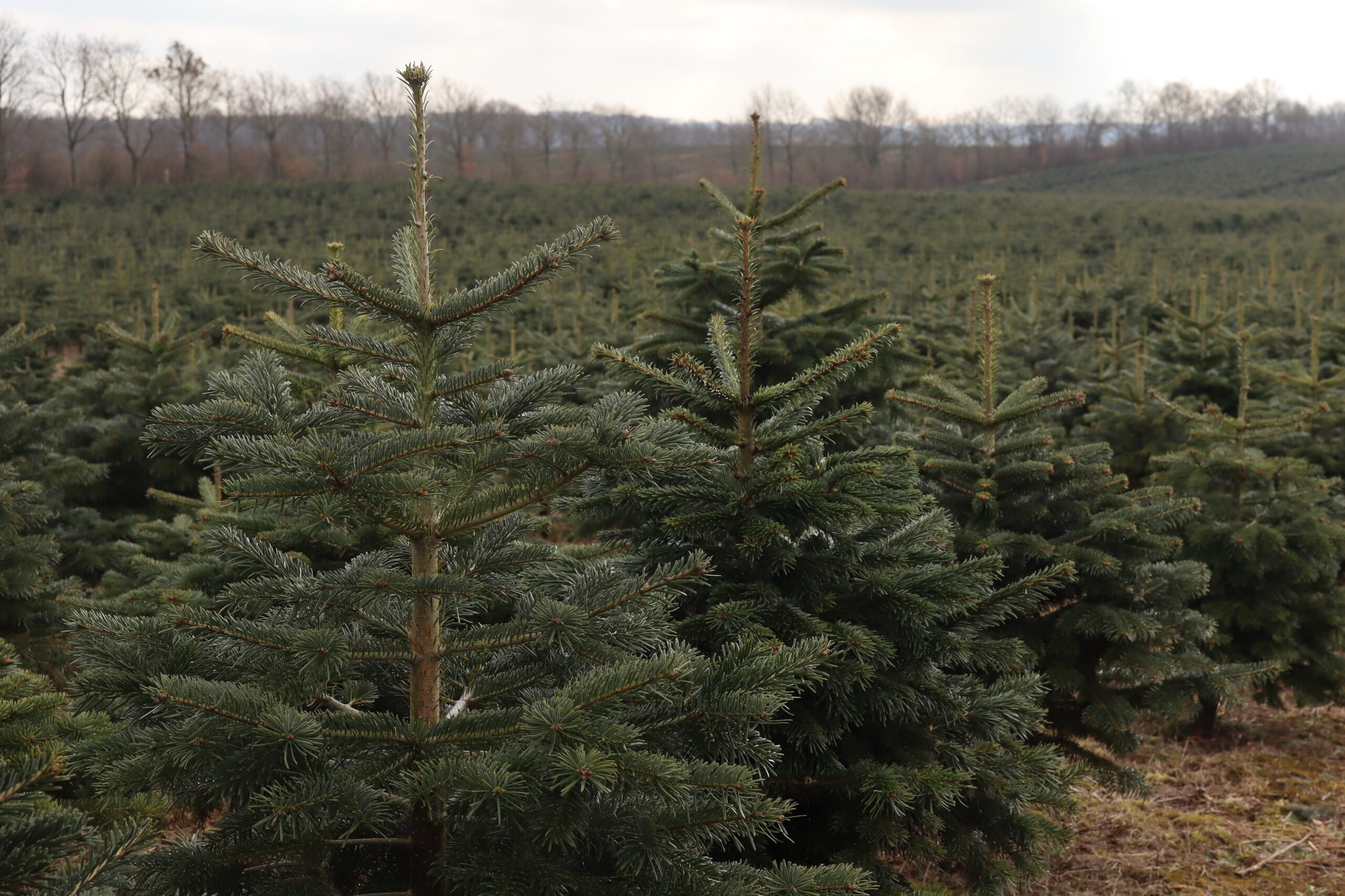
Christmas trees
We find the customer for the tree and the tree for the customer.
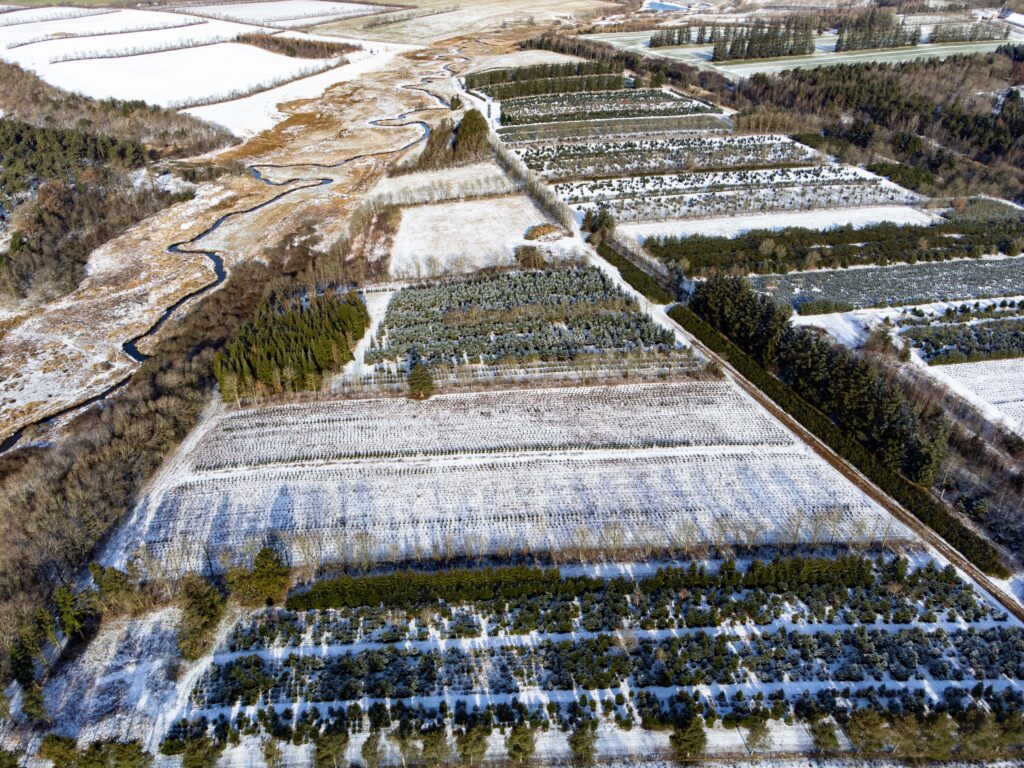
Products and services
Nordmann fir is the most popular Christmas tree in Europe and the species we sell the most. We also offer Norway spruce, noble fir, and pine Christmas trees. At the start of the season, our foresters collaborate on tagging and quality control of the Christmas trees. This ensures consistent quality across all our classifications.
For buyers, we offer the right quality at the right price and the most reliable logistics on the market. We ensure that the Christmas trees are delivered quickly, flexibly, safely, and at the right price. Our Christmas trees are grown with care and treated with respect to ensure that the end customer receives the best Christmas tree on the market.
Contact Green Product A/S today to learn more about our range of Nordmann fir and other Christmas tree species and the possibilities for wholesale sales. We strive to provide the best service and the best products to our customers.
Grading
We are happy to tag the Christmas trees according to our customers’ wishes, but usually, we mark and sell the trees according to our four standard classifications, divided into different height classes. This makes it easy for our customers to order trees without inspecting them in the field. Regarding suppliers, it is usually the standard classification that forms the basis for agreements. You can read more about our classifications below.
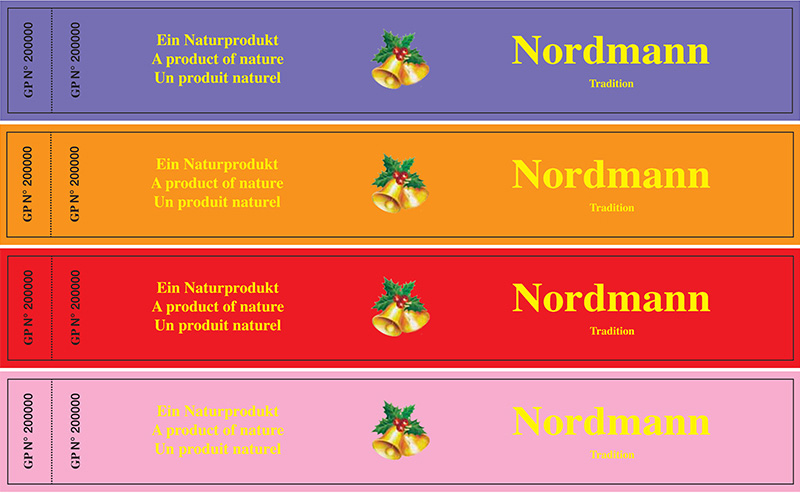
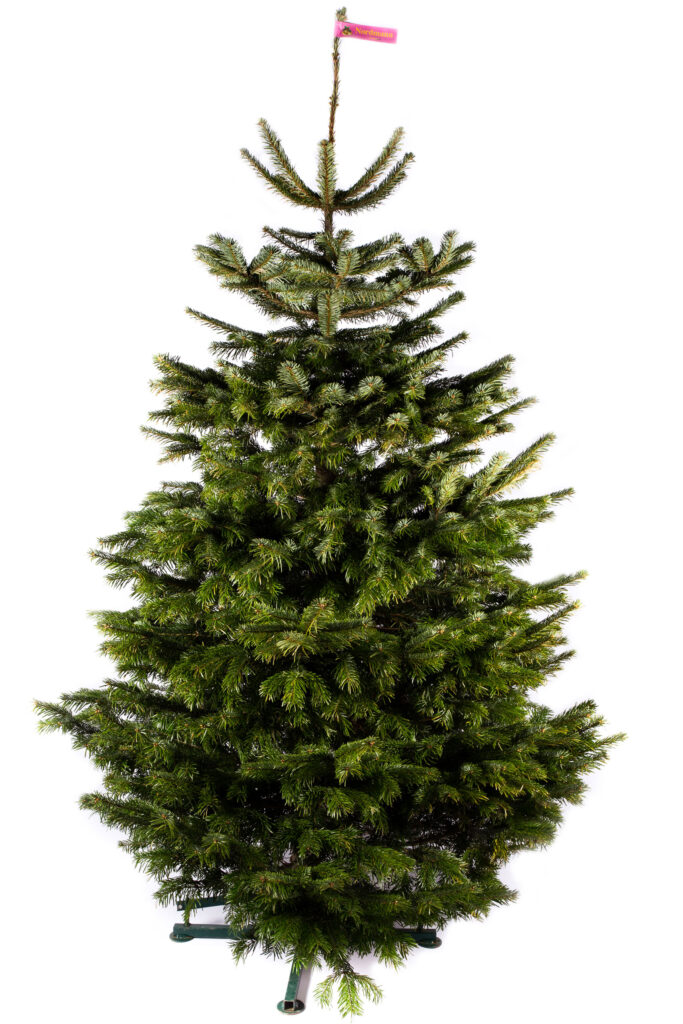
First grade
A beautiful Christmas tree is a very personal experience, but our first-grade trees are selected according to criteria set by our most demanding European customers. As the name implies, this is our most stringent classification. The trees in the first sorting are characterized by a very regular shape and uniformity. At the same time, the needles are strong, and the branch whorls are close together, giving the tree a very full and healthy appearance. The labels we use to mark first-grade trees have the colors silver, green, purple, orange, red, and pink, depending on the height.
Second grade
Our second sorting is for customers who prefer a slightly more open Christmas tree that still appears full and healthy with large, sturdy needles. Like the first sorting, the structure is regular, but there may be minor irregularities that are insignificant to most end customers. The second sorting is often a bit broader than the first sorting, thus covering a wider range of trees. This offers a greater selection for the end customer, ensuring a tree for everyone. Trees in the second sorting are marked with a black, brown, yellow, blue, or white label, depending on the height class.
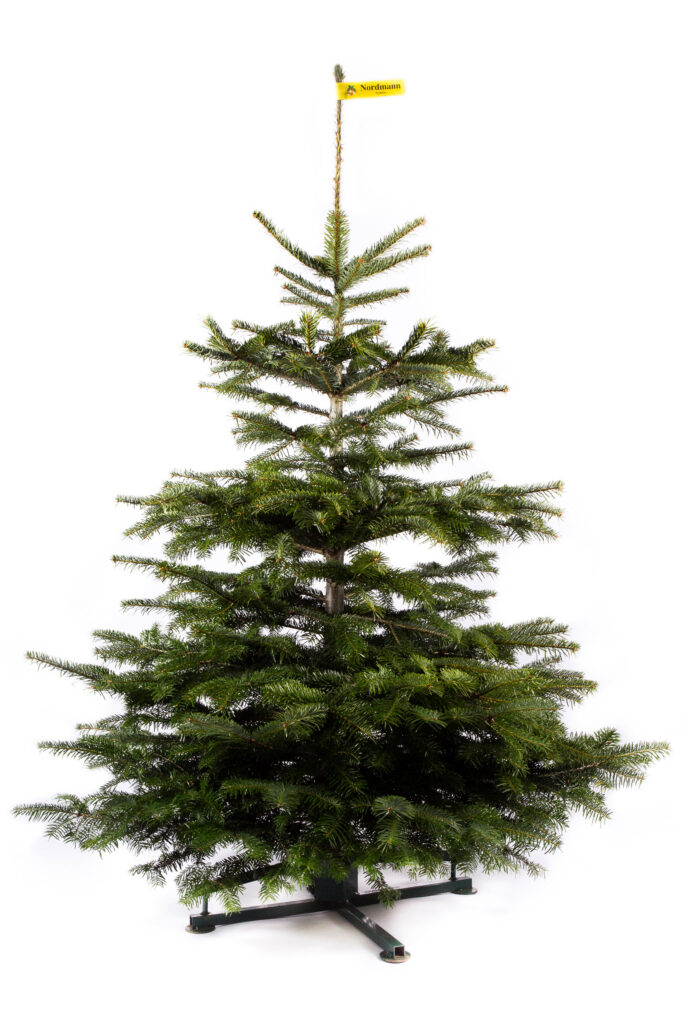
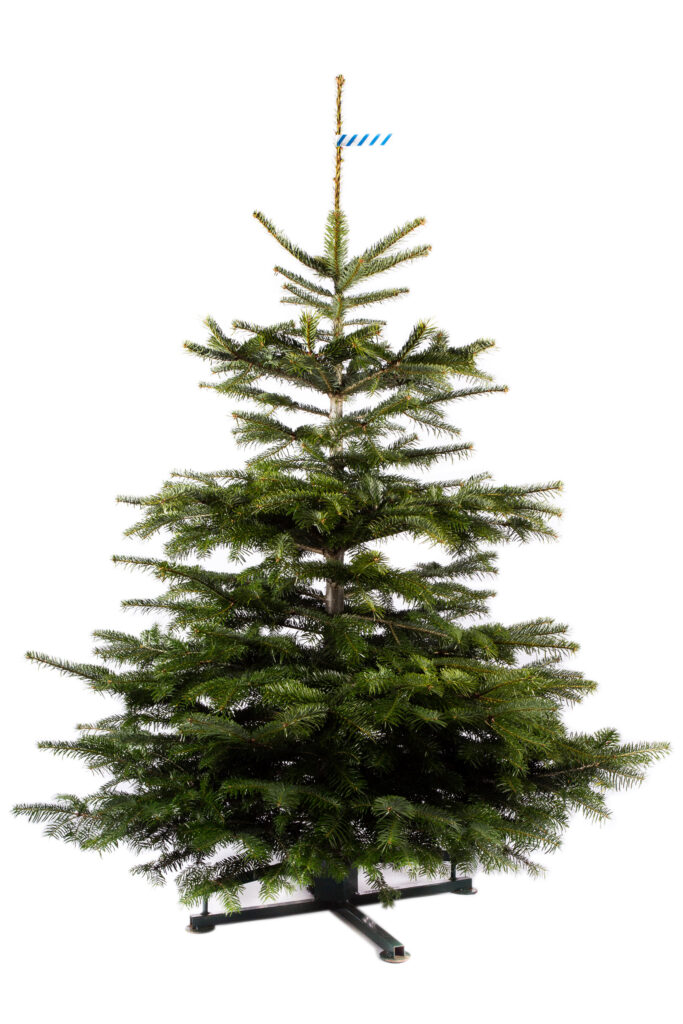
Third grade
Third-grade trees are good Christmas trees at a reasonable price. They appear healthy and uniform, but there may be minor imperfections in the branch structure. They may also be open enough not to fit into either the first or second sorting. Many end customers prefer third-grade trees because they can appear more natural and provide more space for decorations and lights than the denser first and second-grade trees. We usually mark third-grade trees with a narrow blue or narrow purple label.
Ungraded trees
Trees that do not fit into the three previous categories can still often be good Christmas trees. Not all customers need a very uniform Christmas tree that looks nice from all sides. Here, the unclassified trees can be a good choice. It is difficult to describe what an unclassified tree looks like, as by definition, they do not fit into a classification. There will therefore be irregularities or an uneven or open structure that makes them not fit into the above categories. However, the trees are still marketable and provide an economically good alternative to the other classifications. The unclassified trees are typically marked with a narrow red label.
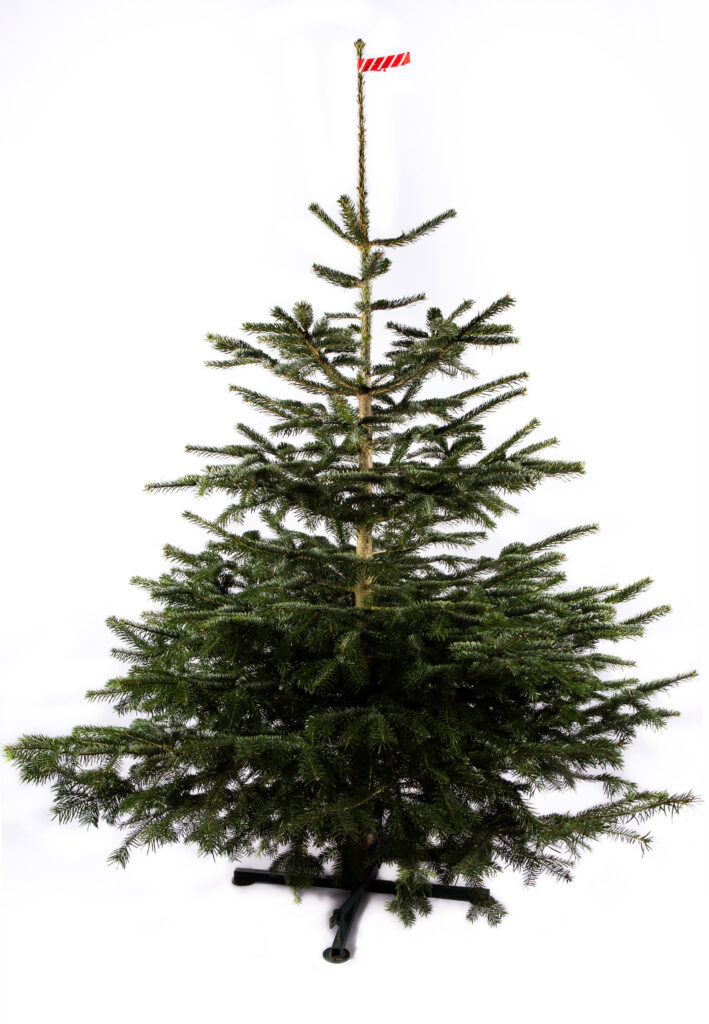
Nordmanns fir as seen from above
Here is a short drone video of a Christmas tree plantation near Hjørring with a lot of trees ready for harvest.
The history of the christmas tree
There is no Christmas without a Christmas tree, but why do we bring the trees into the living room, and why do we dance around them? In this video, forester Tanja Sparrewath Hansen tells the whole story of the Danish Christmas tree.
All about Nordmanns fir – in three minutes
Forester Kristian Løkke Kristensen has been in the forest to talk about Nordmann fir and its cultivation. Nordmann fir is the most common Christmas tree in Denmark. It is native to the Caucasus Mountains and was imported to Western Europe by the biologist Alexander von Nordmann. In Denmark, it is the most common Christmas tree.


